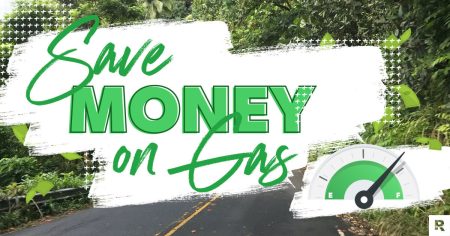Did your beloved truck finally stall out for the last time? Do you want to upgrade from your ’05 Corolla to something that’ll let you jam out to more than just your old mix CDs?
If you’re looking to buy a new (or new-to-you) car, you may think financing is the best way to go. In fact, 79% of new cars were financed in 2023.1
But what does financing a car mean, and is it really your best option? We’re here to give you the honest truth about financing a car—and what signing on the dotted line really costs you.
What Does It Mean to Finance a Car?
When you finance a car, you take out a loan to purchase the vehicle and agree to pay back what was loaned to you (plus interest) over a certain period of time.
Just to be clear, you don’t actually own a car when you finance. The bank (or whoever else lent you the money) owns the car. They just let you drive it around—as long as you make your monthly payment, that is.
But what that smooth-talking car salesman won’t tell you is that, while financing a car will get you in the driver’s seat now, it’s not the smartest choice down the road.
How Does Financing a Car Work?
There are several ways to finance a car: direct financing, indirect financing and leasing. While some of these options are worse than others, all three can trap you into an expensive monthly payment.
Direct Financing
Direct financing a car is when you apply for a car loan through a lender before you shop for a car.
Direct financing is usually done through a bank, credit union or online lender. If you get pre-approved, you can go to a dealership to pick out a car and negotiate the price with the amount you’re approved for. Then you sign some paperwork, agreeing to pay a certain amount per month—aka your car payment.
Your monthly car payment is based on the loan amount (the total cost of the car minus any down payment or trade-in value), the annual percentage rate (aka interest), and the loan term (the amount of time you agree to pay back the car loan).
The average car loan interest rate is 7.03% for a new car and 11.35% for a used car.2 You can usually choose your loan term, which ranges from 24 to 84 months. Most car loans are about 68 months (five and a half years).3 Keep in mind, the shorter the term, the higher the monthly payment. But the longer the term, the more you’ll pay in interest.
So, let’s say you’ve had your eye on a brand-spankin’-new Toyota 4Runner. You head down to your local dealership to check it out in person, and the friendly salesman says he can sell it to you for $40,000. The bank already pre-approved you for a car loan of up to $45,000, so in your mind, you can afford it.
Don’t let car payments hold you back! Learn the proven plan to win with money.
If you get a 60-month loan with the standard 7.03% interest rate and don’t put anything down on the 4Runner, you’re looking at a new car payment of around $793 . . . a month. Yikes! And when all is said and done, you’d fork over an extra $7,557 in interest—for a car that will have lost 60% of its value by the time it’s paid off.4
Indirect Financing
Indirect financing is very similar to direct financing. But instead of getting pre-approved for a car loan, you apply for the loan when you purchase the car at the dealership. Basically, dealerships have a network of lenders that they work with and who they bring their customers to.
It might sound convenient to shop and buy in one place, but it’s harder to negotiate a good deal with indirect financing. First off, you don’t have control over which lenders you get options from. And you don’t know what you’re going to pay until you’ve already fallen in love with the car—so you’re more likely to get a car you can’t afford.
Also, the dealer earns a percentage of the sale as commission for connecting you with the lender. And that amount usually means a higher interest rate for you. So, you’re definitely paying extra for the “convenience” of indirect financing.
Leasing
Leasing is the most expensive way to get a car. It may sound like a great idea if you want to drive a nice car without the huge price tag. But you’re basically paying to drive a glorified rental car.
Sure, the monthly payments on a lease are lower than they would be if you were to directly finance the car. But that’s because you don’t get to keep the car (unless you decide to purchase the car at the end of the lease–which is a terrible deal)!
Your lease payment depends on the rental charge (interest), taxes and fees, and how much the car is expected to depreciate (or lose value) during the lease period.
Oh, and don’t forget: There’s usually a mileage cap on lease agreements. So, if your commute changes or you take a cross-country road trip, you could end up getting charged for every mile you go over.
Plus, you’ve got to make sure you keep the car in perfect condition—or you’ll pay for it later. Again, glorified rental car.
What Credit Score Do You Need to Finance a Car?
There’s no specific credit score you need to finance a car, but your credit score does impact your loan terms—especially your interest rate.
Every lender has different requirements for credit scores. Most people who financed a car in 2023 had a credit score above 660, but almost 15% of car loans were made to people with credit scores of 600 or lower.5 So basically, if you’re breathing, you can get a car loan.
On that note, beware of “buy here, pay here” dealerships that promise to help you finance, even if you’ve got bad credit. You may get a car, but you’ll also have a sky-high interest rate. And the moment you miss a payment, the repo man will be hauling your ride away before you know what happened.
But just because you can finance a car, it doesn’t mean you should. And you know what you don’t need a credit score to do? Buy a car in cash.
Is It a Good Idea to Finance a Car?
Nope, it’s not a good idea. In fact, it’s a horrible idea.
Listen, we get wanting to have a nice car (or even just a reliable car). But when you do the math, you’ll see that financing a car isn’t worth it. Not only does a monthly car payment rob you of your ability to build wealth, it also steals your peace.
That $700 car payment is $700 you’re not saving or investing for your future. And that payment weighs heavy on you every single month. And for what—to impress the parents in the carpool line?
The truth is, you don’t have to take out a car loan to get a good car or even get your dream car (more on that in a minute). Just imagine how free you would feel if you didn’t have a car payment holding you back!
What About Zero Percent Financing?
Don’t be fooled by zero percent financing or any of the other tricky financing options dealerships love to brag about. With seemingly great incentives, like “zero down and zero interest for the first three months,” we get why it’s hard to hop back in your hooptie and drive away from that “deal of a lifetime.”
But here’s the real deal: Zero down just means a bigger loan, and zero interest usually means a higher price tag—and a higher monthly payment. So don’t think you’re saving any money by falling for this trap. Trust us, dealerships have all the marketing research and they know exactly how to lure you in.
How to Get a Car Without Financing
So, how do you make that dream car your reality (without the nightmare of a car payment you can’t afford)? You save up and buy a car with cash.
Here’s how it works: If you were to save $726 (the average new car payment) for just one year, instead of giving it to the dealer, you’d have $8,712.6 With that money, you can buy a dependable used car with straight cash! And if you were to drive that car for a year and keep saving that $726, you’d have another $8,712 plus the trade-in value of your car.
Keep saving and upgrading your car along the way (if you really need to), and before you know it, you’ll have enough to pay cash for that 4Runner. But if you had financed that car, you’d still be paying some hefty monthly payments (plus interest) to the dealership.
It’s time to stop dreaming about a car and start saving. Your first step is to create a budget and be intentional about putting money away. Every. Single. Month.
And saving is easy with the sinking fund feature inside our free budgeting app, EveryDollar. You’ll set your total savings goal, plan what to set aside each month, and track it—so you can watch those car savings grow!
Read the full article here
















